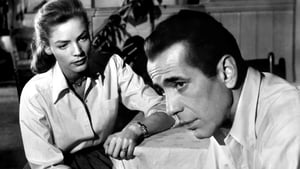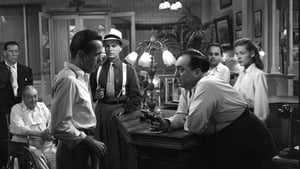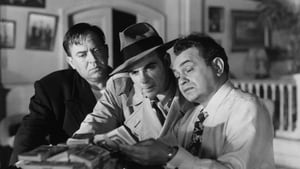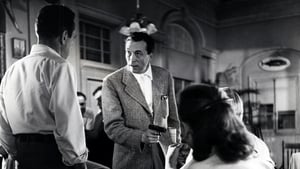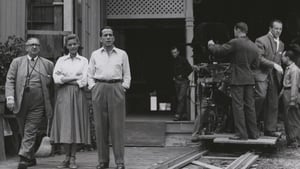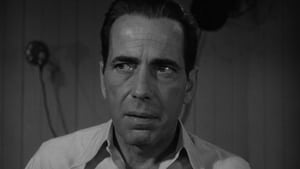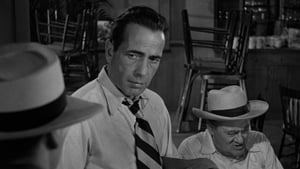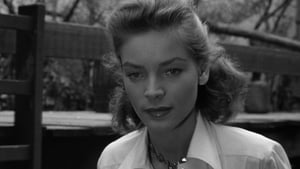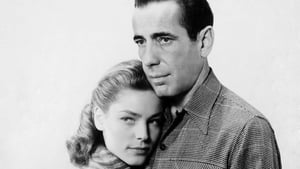Contact: [email protected]
Video Sources 0 Views
- Watch trailer
- Key Largo

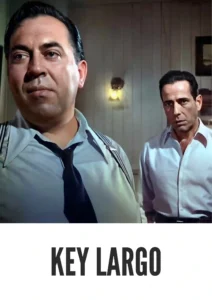
Synopsis
Table of Contents
ToggleReview: Key Largo (1948) – A Tense and Riveting Noir Thriller

Introduction
Key Largo, released in 1948, is a gripping film noir directed by John Huston. Set against the backdrop of a stormy night in the Florida Keys, this atmospheric thriller explores themes of redemption, morality, and the human capacity for heroism in the face of adversity. In this review, we’ll delve into the tense and riveting world of Key Largo and its enduring impact on the noir genre.
Check The Full Colorized Movies List
Check Our Colorized Movies Trailer Channel
Understanding Key Largo (1948): Director, Cast, and Genre
Directed by John Huston, Key Largo boasts an all-star cast, including Humphrey Bogart, Lauren Bacall, and Edward G. Robinson. The film belongs to the film noir genre, known for its dark themes, morally ambiguous characters, and atmospheric cinematography.
Exploring the World of Key Largo (1948): Plot and Characters
Key Largo follows the story of Frank McCloud, a disillusioned World War II veteran who finds himself trapped in a remote hotel during a hurricane. As tensions rise between the hotel’s guests and the ruthless gangster Johnny Rocco, Frank must confront his own demons and rediscover his sense of honor in order to protect the innocent and confront evil head-on.
The Art of Film Colorization
While Key Largo was originally filmed in black and white, its early colorized version adds a new layer of depth to its atmospheric visuals. The colorization process enhances the film’s moody atmosphere and captures the nuances of its shadowy characters with striking clarity.
Early Colored Films: A Brief History
The history of early colored films is marked by innovation and experimentation as filmmakers sought to enhance the visual appeal of their movies. From hand-tinted frames to pioneering technicolor processes, the evolution of colorization techniques transformed the cinematic landscape, offering audiences a new way to experience the darkness and intensity of film noir.
Key Largo (1948) and Its Early Colored Version
The decision to release Key Largo in a colorized format was made with the intention of immersing audiences in the atmospheric beauty of its Florida setting and enhancing the film’s visual impact. While some purists may prefer the original black and white version, the early colorized edition of Key Largo adds a new layer of depth to its moody cinematography and captures the moral ambiguity of its characters with breathtaking clarity.
The Debate Over Film Colorization
The debate over film colorization continues to divide audiences and industry professionals alike. While some argue that colorization breathes new life into classic films and makes them more accessible to modern audiences, others maintain that it compromises the artistic integrity of the original work. As technology advances and filmmaking techniques evolve, the debate over colorization remains a topic of ongoing discussion within the film community.
Examining Key Largo (1948) as an Early Colored Film
Viewing Key Largo in its early colorized iteration offers audiences a fresh perspective on its atmospheric visuals and morally complex characters. The colorization process enhances the film’s moody atmosphere and captures the tension and drama of its narrative with stunning clarity. As viewers are drawn into the stormy world of the Florida Keys, they are treated to a visual feast that immerses them in the timeless allure of classic film noir.
Influence and Legacy: Key Largo (1948)’s Impact on Cinema
Key Largo is widely regarded as a masterpiece of the film noir genre that continues to captivate audiences with its atmospheric beauty and gripping storyline. Its exploration of themes such as redemption, morality, and the human capacity for heroism has left an indelible mark on cinema, shaping the way filmmakers approach storytelling and character development to this day.
Director’s Cinematic Legacy: Beyond Key Largo (1948)
John Huston’s directorial legacy extends far beyond Key Largo, encompassing a diverse body of work that includes acclaimed films such as The Maltese Falcon and The Treasure of the Sierra Madre. As one of the most respected filmmakers of his generation, Huston was known for his ability to craft compelling narratives that explored the darker aspects of the human experience with depth and nuance. Key Largo stands as a testament to his talent and creativity, solidifying his reputation as one of the great auteurs of classic Hollywood cinema.
Themes Explored in Key Largo (1948)
At its core, Key Largo explores themes of redemption, morality, and the human capacity for heroism in the face of adversity. Through its morally complex characters and atmospheric cinematography, the film offers a nuanced portrayal of the human condition, challenging viewers to confront their own beliefs about right and wrong as they navigate the treacherous waters of the Florida Keys.
Reception and Controversy Surrounding Key Largo (1948)
Upon its release, Key Largo received widespread critical acclaim for its atmospheric beauty, gripping storyline, and powerhouse performances. While the decision to release the film in a colorized format sparked debate among purists, its enduring popularity has cemented its status as a timeless classic of the film noir genre.
Where to Watch Key Largo (1948) Online
For those eager to experience Key Largo for themselves, the film is readily available on popular streaming platforms such as Amazon Prime Video, Google Play Movies, and iTunes. Whether viewed in its original black and white format or its early colorized iteration, Key Largo offers a cinematic experience that is both atmospheric and visually stunning.
FAQs About Key Largo (1948)
1. Is Key Largo based on a true story?
No, Key Largo is a fictional film that explores the atmospheric beauty of the Florida Keys through the eyes of its morally complex characters. While the film’s storyline may draw inspiration from real-life events, its characters and plot are works of fiction.
2. Who starred in Key Largo?
Key Largo stars Humphrey Bogart in the role of Frank McCloud, a disillusioned World War II veteran who finds himself trapped in a remote hotel during a hurricane. He is supported by a talented ensemble cast, including Lauren Bacall, Edward G. Robinson, and Lionel Barrymore.
3. What is the central message of Key Largo?
At its core, Key Largo explores themes of redemption, morality, and the human capacity for heroism in the face of adversity. Through its morally complex characters and atmospheric cinematography, the film offers a nuanced portrayal of the human condition, challenging viewers to confront their own beliefs about right and wrong as they navigate the treacherous waters of the Florida Keys.
4. Why was Key Largo released in a colorized format?
The decision to release Key Largo in a colorized format was made with the intention of immersing audiences in the atmospheric beauty of its Florida setting and enhancing the film’s visual impact. While some purists may prefer the original black and white version, the early colorized edition of Key Largo adds a new layer of depth to its moody cinematography and captures the moral ambiguity of its characters with breathtaking clarity.
5. What is the legacy of Key Largo?
Key Largo is widely regarded as a masterpiece of the film noir genre that continues to captivate audiences with its atmospheric beauty and gripping storyline. Its exploration of themes such as redemption, morality, and the human capacity for heroism has left an indelible mark on cinema, shaping the way filmmakers approach storytelling and character development to this day.
6. Are there any sequels or remakes of Key Largo?
No, there have been no official sequels or remakes of Key Largo. However, the film’s enduring popularity has inspired countless reinterpretations and homages in various media. Nonetheless, none have captured the atmospheric beauty and moral complexity of the original 1948 classic.
7. Where can I watch Key Largo online?
For those eager to experience Key Largo for themselves, the film is readily available on popular streaming platforms such as Amazon Prime Video, Google Play Movies, and iTunes. Whether viewed in its original black and white format or its early colorized iteration, Key Largo offers a cinematic experience that is both atmospheric and visually stunning.
Conclusion
In conclusion, Key Largo (1948) stands as a gripping masterpiece of the film noir genre that continues to captivate audiences with its atmospheric beauty, morally complex characters, and gripping storyline. Whether viewed in its original black and white format or its early colorized iteration, John Huston’s insightful direction and the powerhouse performances of the cast offer a cinematic experience that is both tense and visually stunning. As viewers are drawn into the stormy world of the Florida Keys, they are treated to a visceral journey that challenges their beliefs about right and wrong and leaves a lasting impact on their understanding of the human condition. Key Largo remains a timeless classic that continues to enthrall and inspire audiences around the world.
